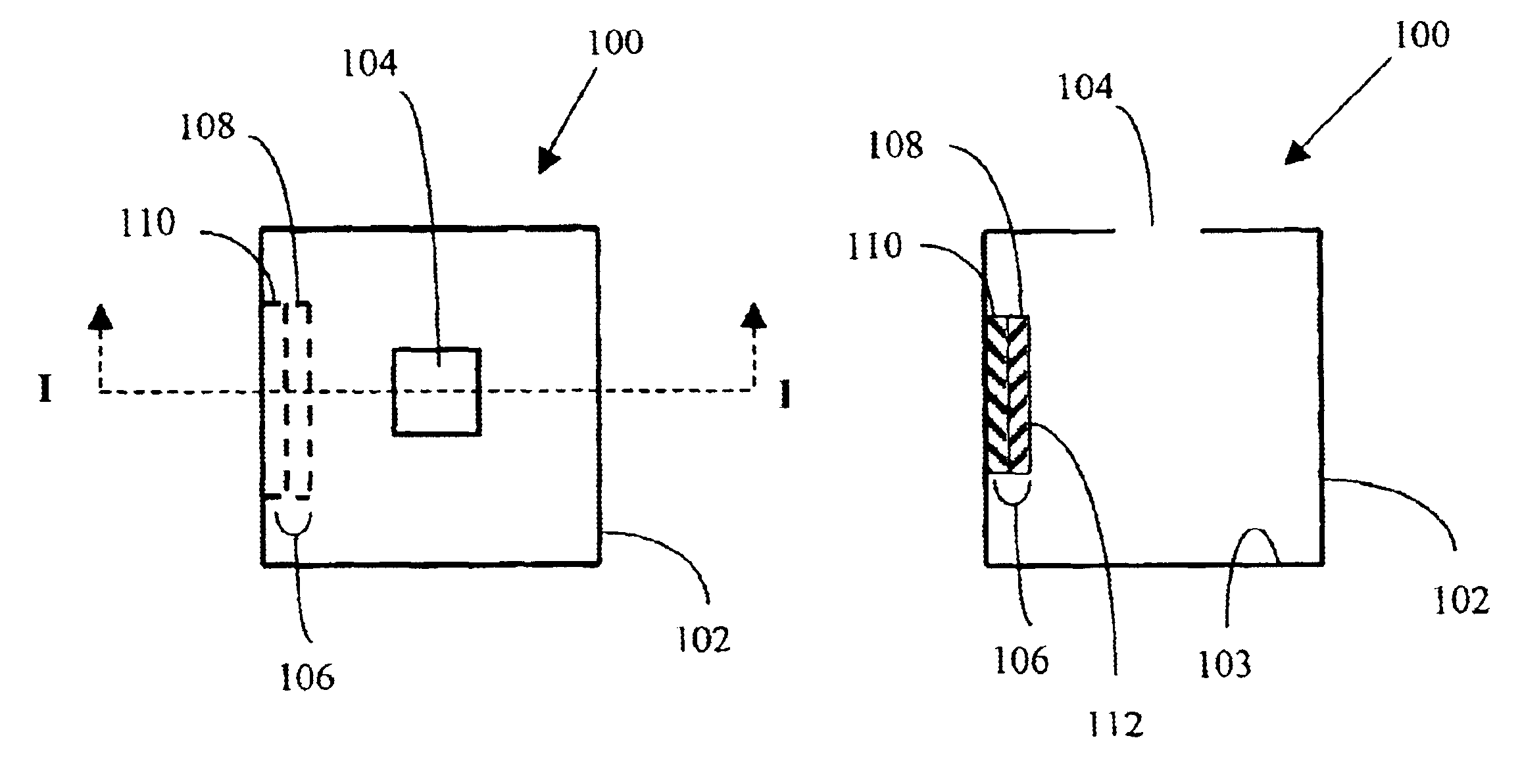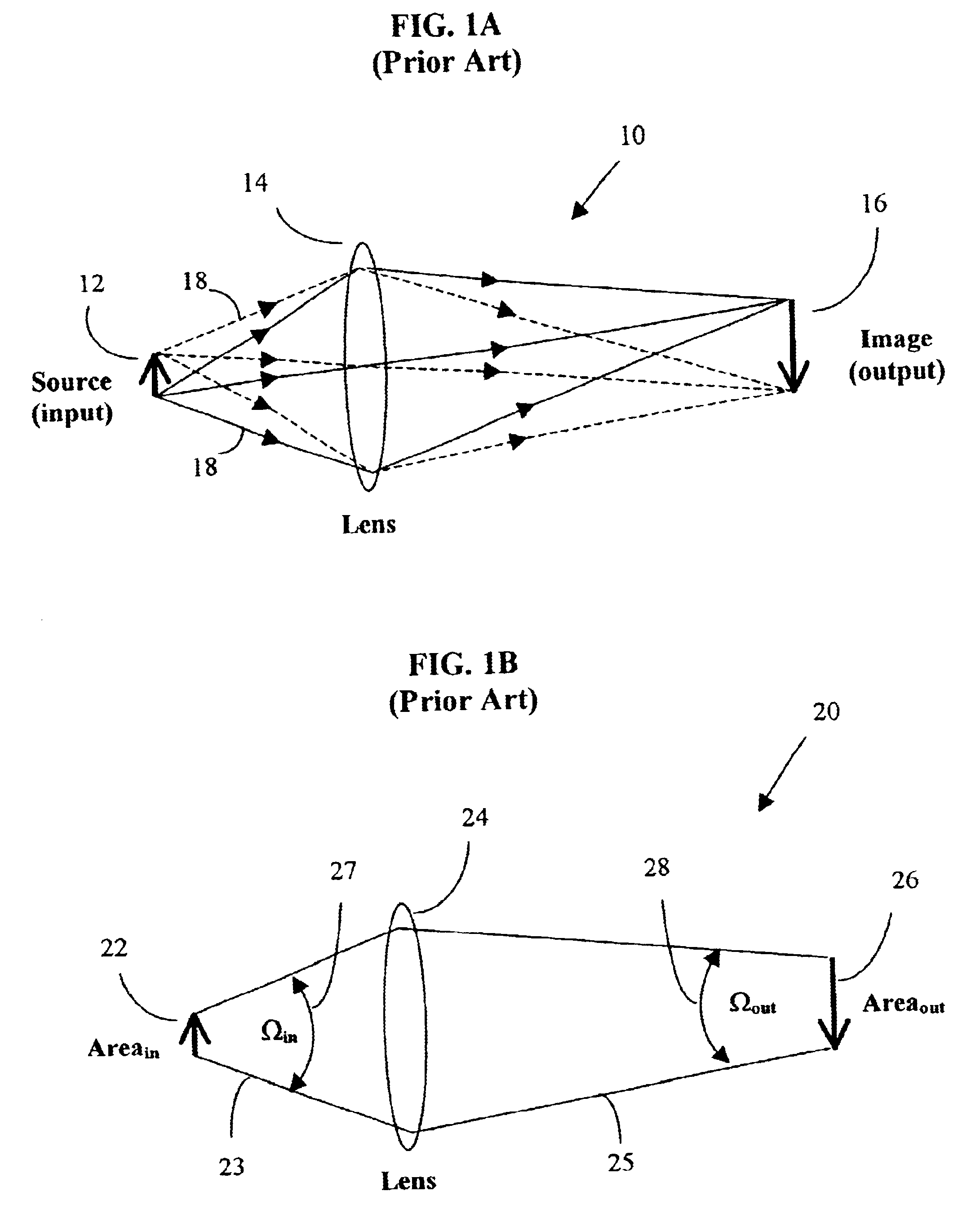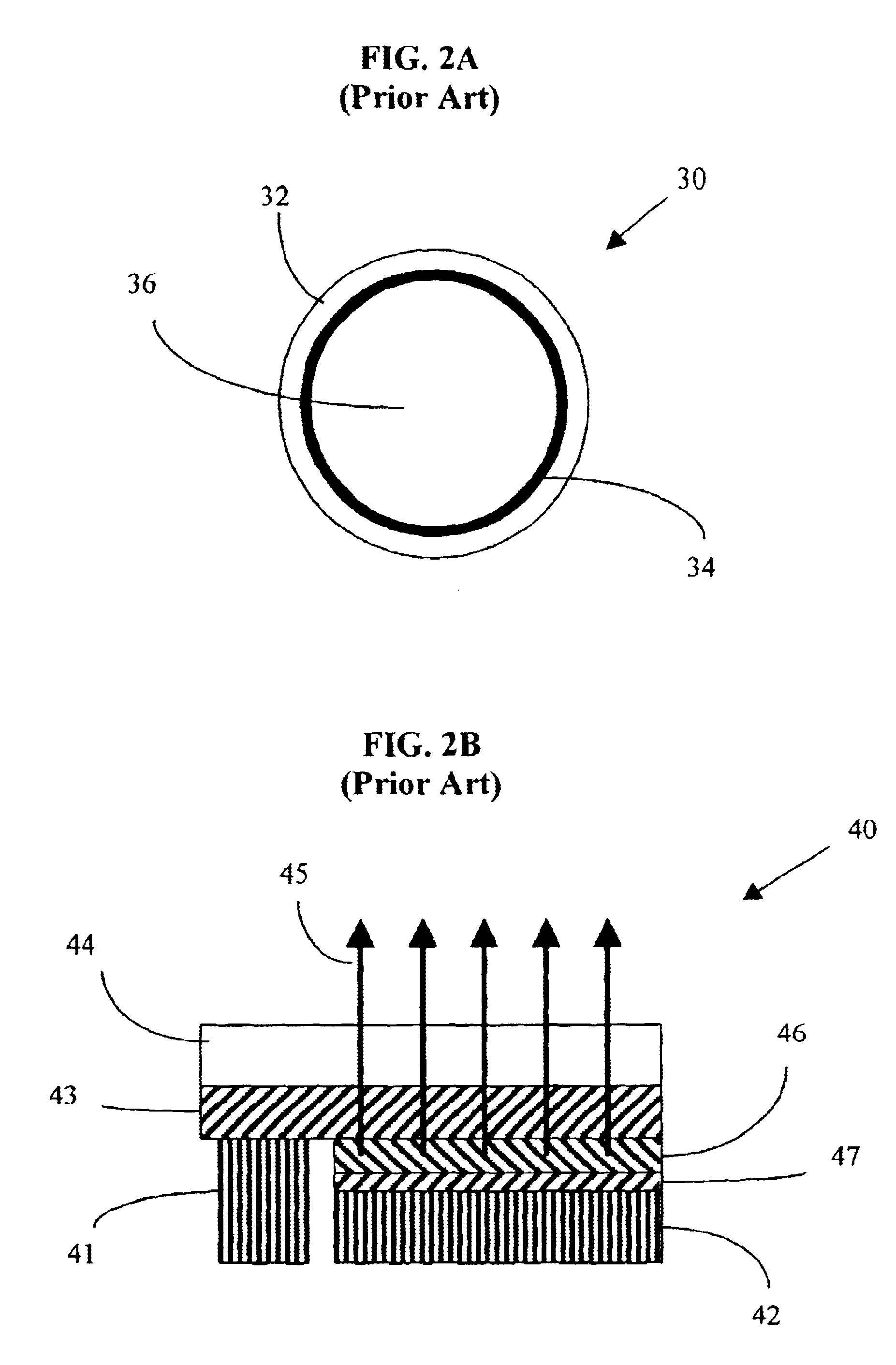Illumination systems utilizing highly reflective light emitting diodes and light recycling to enhance brightness
a light-emitting diode and illumination system technology, applied in the field of illumination systems and optical systems, can solve the problems of not being suitable for many applications such as illumination systems, and not being able to produce optical output images with luminances higher than the luminance of light sources
- Summary
- Abstract
- Description
- Claims
- Application Information
AI Technical Summary
Benefits of technology
Problems solved by technology
Method used
Image
Examples
example 1
[0056]In this example, a non-sequential, ray-tracing, computer program is used to calculate the relative output luminance and the overall output efficiency of a light-reflecting cavity containing twelve identical LED sources. Each LED source has dimensions of 2 mm×2 mm, an area of 4 mm2, an emitted flux of 150 lumens and intrinsic luminance LI. Each LED source is assumed to have a Lambertian output light distribution. The total area AS of the twelve LED sources is 48 mm2, and the total emitted flux of the twelve LED sources is 1800 lumens. The light-reflecting cavity has a square cross-section with inside dimensions of 2.8 mm×2.8 mm, inside length of 9 mm and a total inside area of 70.56 mm2. The total inside area includes the area of the twelve LED sources and the area of the output aperture. This example is illustrated schematically in FIG. 6. The light output aperture of the light-reflecting cavity has an area AO of 7.2 mm2 so that AO / AS=0.15, i.e. the area of the light output ap...
example 2
[0058]This EXAMPLE is similar to EXAMPLE 1 except that AO is reduced to 4.8 mm2 and the ratio AO / AS is thereby reduced to 0.10. In this example, a non-sequential, ray-tracing, computer program is used to calculate the relative output luminance and the overall output efficiency of a light-reflecting cavity containing twelve identical LED sources. For simplicity, the specular reflectivity RS of the LED sources is assumed to be identical in magnitude to the diffuse reflectivity RC of the inside surfaces of the light-reflecting cavity that are not covered by the LED sources. The results are shown below in TABLE 2.
TABLE 2Area AO ofTotal sourceSourceCavityLuminanceTotaloutput aperturearea ASArea ratioRSRCenhancementEfficiencylumens(mm2)(mm2)AO / AS(%)(%)(L0 / L1)(%)out (lm)4.8480.1040400.797.91424.8480.1050500.919.21664.8480.1060601.0810.81944.8480.1070701.3813.82484.8480.1080801.8919.23464.8480.1090903.1131.15604.8480.1098986.8768.71237
[0059]The computer modeling results indicate that for RS...
example 3
[0060]This EXAMPLE is similar to EXAMPLE 1 and EXAMPLE 2 except that AO is reduced to 2.4 mm2 and the ratio AO / AS is reduced to 0.05. In this example, a non-sequential, ray-tracing, computer program is used to calculate the relative output luminance and the overall output efficiency of a light-reflecting cavity containing twelve identical LED sources. For simplicity, the specular reflectivity RS of the LED sources is assumed to be identical in magnitude to the diffuse reflectivity RC of the inside surfaces of the light-reflecting cavity that are not covered by the sources. The results are shown below in TABLE 3.
TABLE 3Area AO ofTotal sourceSourceCavityLuminanceTotaloutput aperturearea ASArea ratioRSRCenhancementEfficiencylumens(mm2)(mm2)AO / AS(%)(%)(L0 / L1)(%)out (lm)2.4480.0540400.874.4792.4480.0550501.005.0902.4480.0560601.195.91062.4480.0570701.497.51352.4480.0580802.1210.61912.4480.0590903.6618.33292.4480.05989810.3451.7931
[0061]The computer modeling results indicate that for RS=R...
PUM
 Login to View More
Login to View More Abstract
Description
Claims
Application Information
 Login to View More
Login to View More - R&D
- Intellectual Property
- Life Sciences
- Materials
- Tech Scout
- Unparalleled Data Quality
- Higher Quality Content
- 60% Fewer Hallucinations
Browse by: Latest US Patents, China's latest patents, Technical Efficacy Thesaurus, Application Domain, Technology Topic, Popular Technical Reports.
© 2025 PatSnap. All rights reserved.Legal|Privacy policy|Modern Slavery Act Transparency Statement|Sitemap|About US| Contact US: help@patsnap.com



